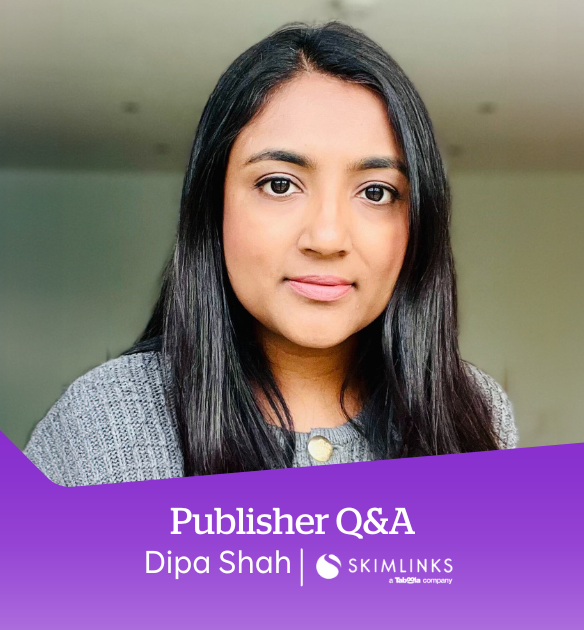RAIC Insights: Best Practices for Working with Different Publisher Models
RAIC showcases the strategies and steps to elevate your affiliate thinking, giving you the tools to outthink and outperform. In our latest RAIC Insights, Matheus Campos from Savings United shares his best practices for working with different publisher models.

The Rakuten Advertising International Collective (RAIC) aims to showcase the strategies and steps to elevate your affiliate thinking, giving you the tools to outthink the market and deliver campaigns that outperform for your business. In our latest post, Matheus Campos, Senior Partnerships Manager at Savings United, outlines the best practices for working with different publisher models.
Before we delve into best practices, I recommend reading Rakuten Advertising’s Affiliate Marketing 101 to help familiarize yourself with the content covered here.
Advertisers must fine-tune their strategies as marketing becomes more data-driven to achieve their KPIs efficiently. Here is where targeting the right audience becomes the key focus in an affiliate strategy.
Whether you want to reduce your acquisition cost, raise brand awareness, drive new customers, build loyalty or increase average-order-value (AOV), finding a partner that can check every box is challenging, and dealing with several publishers isn’t always easy. Some partners have unique requirements and lead times. Payout models differ; you may speak about the same thing with multiple people. The good news is there are ways to streamline your efforts so you and your partners achieve the best results possible. This article will cover three key ways to work with different publisher models efficiently.
- Strategy Planning (Budget, Goals & ROAS)
- Communication
- Optimization
Strategy and Planning
Several articles, some written by fellow RAIC members, cover in detail how to efficiently work with different publisher models to maximize your affiliate investment. RevLifter recently published a great piece outlining how to strategically use your partners throughout the consumer journey.
Additionally, marketers need to understand that they might be asked to use different commercial modes like fixed fees, Cost-Per-Click (CPC), increased Cost-Per-Action (CPA) or a more aggressive Cost-Per-Lead. That said, it’s important to avoid unnecessary spending, which could harm relationships. Some tips that might help out with this are:
- Make sure your affiliate network integration is properly set up to cover all your strategic needs.
- I’ve seen advertisers not being able to find transactions made by publishers and even pay for duplications
- Define a budget per publisher type and consider having an extra pot that you can use for further optimizations
- Define a ROAS per publisher type. This will play a pivotal role when we get to the next section:
- Even though a CPA model may reduce overspending, you may want to try a hybrid approach like CPA + Fixed fees. Savings United has partnered with several advertisers under a hybrid model. By understanding the expected ROAS goals and using past performance data, we can align strategic plans that help our clients achieve the best performance.
Communication
It’s all about communication! Communication plays an important role in all aspects related to dealing with different publishers. Poor communication can turn a clear profitable campaign into a messy headache.
We recommend you support your partners with the following:
- Briefings
- When working with coupon or cashback site placement, you need to provide clear instructions on which offers to promote
- For podcasts, content, or social partners, make sure you clearly outline any key messages and share your brand guidelines to help deliver accurate, engaging and on-brand messages to consumers
- If you are working in verticals such as finance that need to maintain a level of compliance, ensure you’re clear with your briefings and your partners understand any legalities around the promotion of your brand, product or services
- Creative assets;
- Ensure you share with your partners any visuals that will help in the promotion of your brand
- Expected ROAS (if applicable)
- Finally, ask your partners for copies of articles or screen-shots of placements promoting your brand
An example of how the above can work to improve performance is through optimizations we recently made for a partner. At Savings United, we work with several media outlets on voucher code projects, optimizing conversion rates by promoting vanity codes, linkless codes (tied to a placement) and short-term deals.
When it comes to improving the efficiency of campaigns, sharing is caring. This is especially true with affiliate marketing when performance metrics tell the story of your strategy, and every dollar counts.
Optimisation
Data is like an old friend, with one look, you know, if something isn’t quite right.
Affiliate networks such as Rakuten Advertising have developed reporting systems that accurately track individual publisher performance. The data, coupled with asking the right questions, can help you decide on the next steps and ensure your campaigns are moving in the right direction. Here are a few questions you might want to ask:
- Were our KPIs met?
- Can we make any optimizations to enhance our campaign further?
- Do we need to change our timeline and how we plan campaigns?
- Are different publisher models driving different results? If yes, which partners will help me to achieve my goals most efficiently?
Like many things in strategic planning, this whole process is cyclical. Even brands with mature affiliate programs are continuously optimizing their campaigns. They know that good relationships with publishers can be a powerful tool for achieving success.


